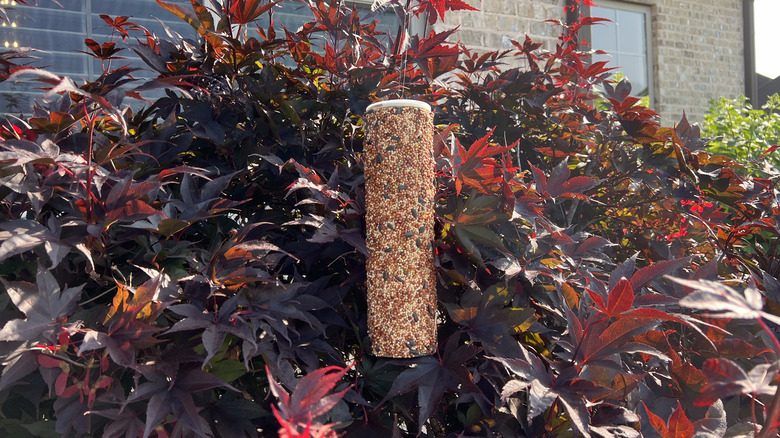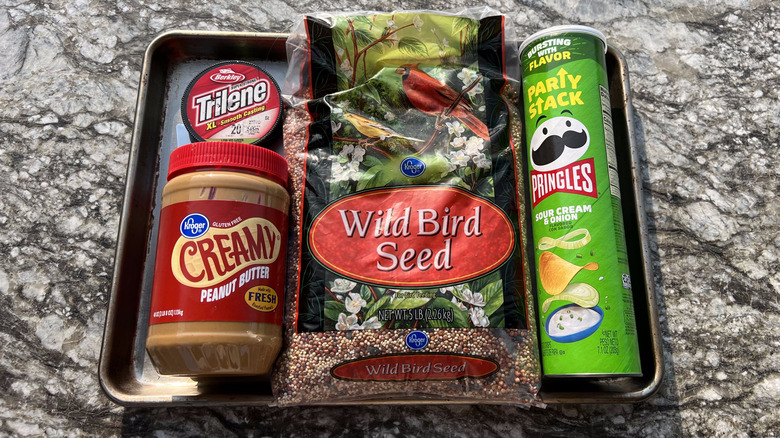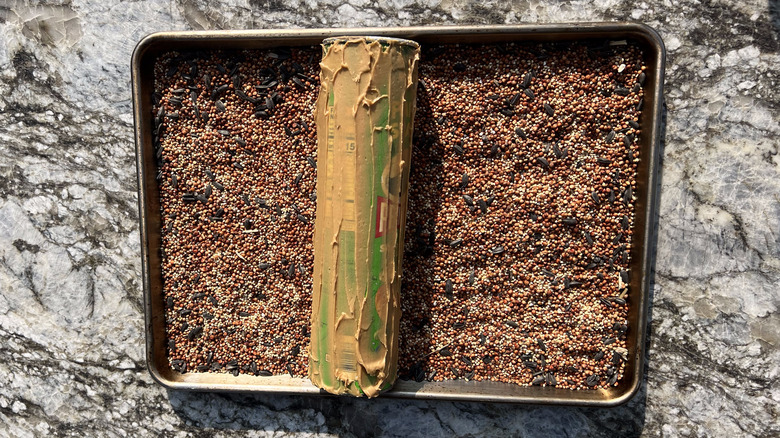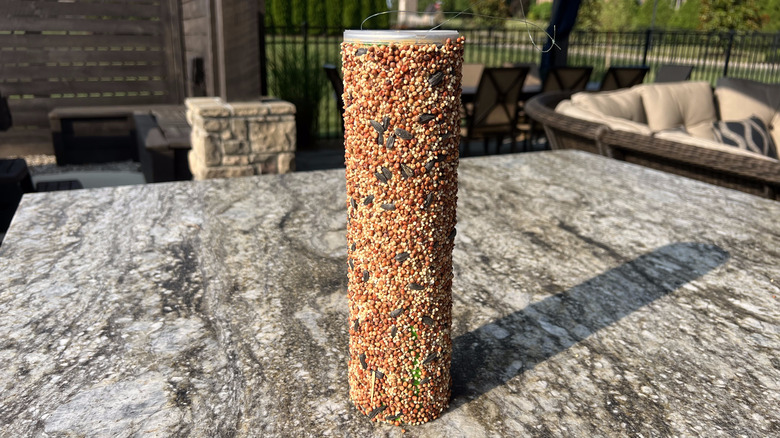We Made A Birdfeeder From An Old Pringles Can But The Results Didn't Fly
If you've just completed a can of Pringles, don't toss the empty container in the trash, instead save it for a clever project that you might be able to complete with items you already have on hand. To attract birds to your home, cover the Pringles can in peanut butter, then roll it in birdseed and hang it in a tree for a DIY bird feeder.
Before we tested this project for ourselves, we did have a few concerns. To begin, we expected it to be quite messy as the exterior of the Pringles can needs to be completely covered in peanut butter. We also wondered how user-friendly this feeder would be for birds since there are no perches or mesh areas for them to land, so we needed to place it in a tree or bush with lots of branches. Further, you can't keep this feeder out in the rain, as all the peanut butter would wash away, and storing it could be a hassle. However, despite these concerns, we were also hopeful that a bird sighting would occur.
Gathering the tools and materials
To make this bird feeder, you'll need quite a unique assortment of items. Of course, peanut butter, Pringles, and birdseed are the essentials, all of which you can purchase for around $10. You'll also need something to tie at the top of the bird feeder so that it can hang. While you could use ribbon, string, or rope, we decided upon fishing line, since that's what we had on hand. For tools, you'll need a hole punch or a pair of scissors to cut the holes in the lid for hanging, a butter knife to spread on the peanut butter, and a baking sheet to contain the birdseed when rolling it onto the can.
Because this project can get quite sticky, you could also wear plastic gloves. However, because we didn't have these available, we simply completed the DIY near an outdoor sink. We built the bird feeder outside because, unless you're extra careful, the bird seed and peanut butter can easily get everywhere. We also prepared for the project by deciding where to hang the bird feeder. Because we don't have any large trees in our yard, a bush was the next best option, and we decided to nestle it in the branches to give birds a place to perch.
Completing the messy part
The first step to creating the bird feeder was removing the plastic lid from the Pringles can and cutting two holes on each side. We did this with scissors since we didn't have a hole punch. While we created slits instead of holes, they still did the job and worked perfectly. Then, we cut a small piece of fishing line and thread it through the slits, tying it at the top. Next, we were ready to move on to the messy part — spreading the peanut butter.
With the butter knife, we smeared the sticky food all over the exterior of the Pringles can. When doing this, we found that the easiest method was to place the can upright and hold the top down with the palm of one hand while the other spread the peanut butter on. After washing our hands, we poured the bird seed into the baking sheet in an even layer then rolled the can into the seeds, pressing down slightly. This was extremely easy to do, and when we shook the can afterward, only a few seeds fell off. Once we attached the lid, our bird feeder was ready to be hung on a branch.
The end result
Overall, this backyard bird feeder was easy and inexpensive to make and was a great way to repurpose an item that normally gets tossed in the trash. We could see this being a fun project to complete with kids, as it's simple but still fun and exciting. Further, we also discovered that it wasn't actually as messy as we anticipated it to be. Sure, the peanut butter was annoying to work with and wash off, but cleanup was fast, as we just washed our hands, poured the extra birdseed back into the container, and cleaned the baking sheet.
With all that being said, only those who have an ideal place to put the feeder for birds to perch should complete this DIY. We didn't see any birds come up to our feeder, despite hearing them chirp all throughout the day. While this could be because of a number of reasons including that we don't have any other feeders, we think this was mostly because of the bird feeder's location and lack of perches. If we had a taller tree with more branches to hang the feeder from, we probably would have seen some action.



